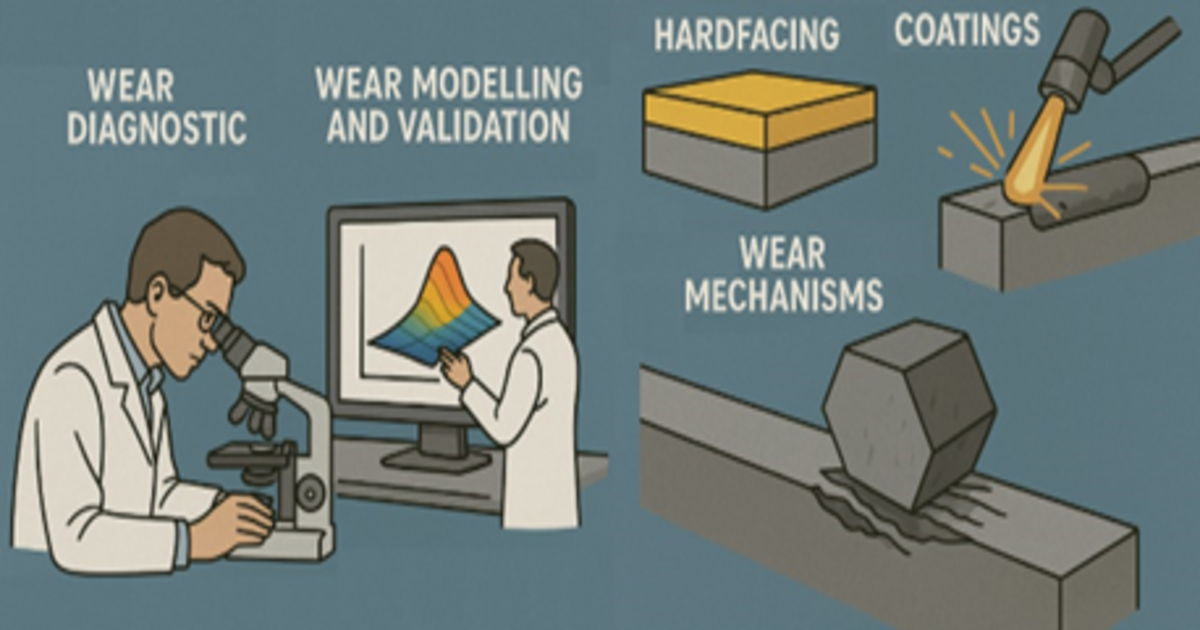- 2.5Impact Factor
- 5.5CiteScore
- 20 daysTime to First Decision
Advances in Material Wear Mechanisms and Modeling
This special issue belongs to the section “Materials Science and Engineering“.
Special Issue Information
Dear Colleagues,
Material wear remains a critical challenge across sectors including manufacturing, mining, agriculture, energy, transportation, and biomedical engineering. As components are increasingly expected to perform under extreme operating conditions—abrasion, impact, cyclic loading, and corrosive environments—the demand for advanced materials and accurate predictive models has never been greater.
Tribological contact accounts for about 23% of the world’s energy usage, with 3% of global energy spent on remanufacturing and replacement resulting from wear and wear-related failures.
It is indicated that the wear of surfaces and functional components imposes a cost of around 3% of GDP in developed economies—highlighting significant wear-related expenditure in industry and infrastructure.
By integrating predictive wear modeling—through analytical methods, DEM, FEM, CFD, and machine learning—consumers can predict component behavior under real-world conditions. Such capabilities translate into reduced downtime, improved productivity, fewer replacements, and substantial economic and environmental benefits.
This Special Issue aims to present and promote the latest scientific and technological advances in understanding, measuring, modelling, and controlling material wear loss. We seek contributions that explore both the fundamental mechanisms behind different wear processes and the applied strategies for improving durability and performance in real-world environments.
Dr. Egidijus Katinas
Dr. Rostislav Chotěborský
Dr. Michal Petrů
Guest Editors
Manuscript Submission Information
Manuscripts should be submitted online at www.mdpi.com by registering and logging in to this website. Once you are registered, click here to go to the submission form. Manuscripts can be submitted until the deadline. All submissions that pass pre-check are peer-reviewed. Accepted papers will be published continuously in the journal (as soon as accepted) and will be listed together on the special issue website. Research articles, review articles as well as short communications are invited. For planned papers, a title and short abstract (about 250 words) can be sent to the Editorial Office for assessment.
Submitted manuscripts should not have been published previously, nor be under consideration for publication elsewhere (except conference proceedings papers). All manuscripts are thoroughly refereed through a single-blind peer-review process. A guide for authors and other relevant information for submission of manuscripts is available on the Instructions for Authors page. Applied Sciences is an international peer-reviewed open access semimonthly journal published by MDPI.
Please visit the Instructions for Authors page before submitting a manuscript. The Article Processing Charge (APC) for publication in this open access journal is 2400 CHF (Swiss Francs). Submitted papers should be well formatted and use good English. Authors may use MDPI's English editing service prior to publication or during author revisions.
Keywords
- surface modelling
- wear diagnostic tools
- wear modelling and validation
- coatings
- hardfacing
- wear mechanisms

Benefits of Publishing in a Special Issue
- Ease of navigation: Grouping papers by topic helps scholars navigate broad scope journals more efficiently.
- Greater discoverability: Special Issues support the reach and impact of scientific research. Articles in Special Issues are more discoverable and cited more frequently.
- Expansion of research network: Special Issues facilitate connections among authors, fostering scientific collaborations.
- External promotion: Articles in Special Issues are often promoted through the journal's social media, increasing their visibility.
- e-Book format: Special Issues with more than 10 articles can be published as dedicated e-books, ensuring wide and rapid dissemination.

